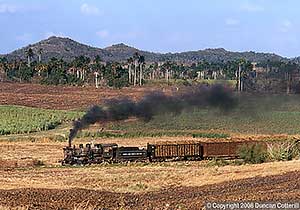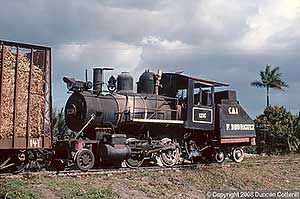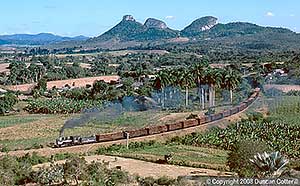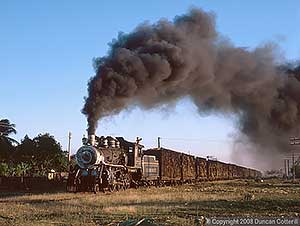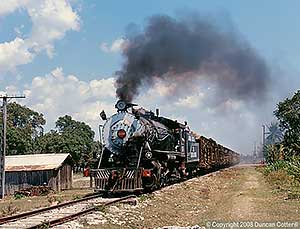La Habana
3 photos
updated : 2022-07-05
La Habana Province covers the area surrounding Cuba's capital city in the west of the island. It's relatively hilly country compared to central and eastern parts of the island and had fewer sugar mills but there were some interesting operations with both standard and narrow gauge lines.
Matanzas
2 photos
updated : 2022-07-05
Matanzas Province is in western Cuba, occupying an area to the east of the capital, La Habana (Havana). Sugar growing was concentrated in the central and northern parts of the province. The mills here tended to be smaller than many of those further east but were certainly no less interesting.
Oriente
4 photos
updated : 2022-07-05
Oriente was the easternmost of the Cuban provinces with several fairly isolated pockets of sugar production. Its mills were amongst the least visited by enthusiasts, apart from one, Rafael Freyre, a superb narrow gauge system in the hilly country near the north coast resort of Guardalavaca.
Camagüey
6 photos
updated : 2022-07-05
Camagüey Province occupied a large area of eastern Cuba and included some very productive sugar growing areas, particularly in the south and west, around the towns of Ciego de Avila and Florida. Mills here tended to be large and widely spaced with extensive standard gauge railway systems.
Las Villas
3 photos
updated : 2022-07-05
Las Villas Province covered a large part of central Cuba and included many cane growing areas, with around 50 active mills at the peak of sugar production in the 1980s. Railway operations varied from small narrow gauge systems to large mills with extensive standard gauge networks and ex-main line locos.
The big attraction in Cuba was the sugar cane harvest that took place in spring every year. Most mills had their own rail system to bring cane from outlying loading points to the mill and many of them still used steam locomotives right up to the end of the 20th century.
An unbelievable variety of engines from the main US builders could still be seen at work in the mid 1990s, most of them over 70 years old. The pictures here are from a 1996 trip but others will be added when time permits.




 options
options hide options panel
hide options panel